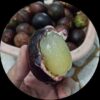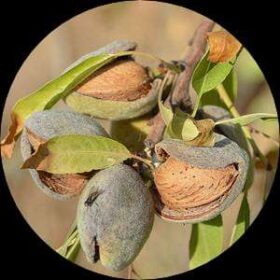- Empty cart.
- Continue Shopping
Langsat Fruit
₹750.00Current price is: ₹750.00. Original price was: ₹1,200.00.
Genus : Lansium
Indulge in the succulent, juicy flesh of the Langsat fruit, which is known for its delicate balance of sweetness and acidity. This fruit plant is a wonderful addition to any garden, offering both ornamental beauty and a bountiful harvest of delicious fruits.
Add to cart
Langsat, also known as Lansium parasiticum, is a tropical fruit plant native to Southeast Asia. It is a member of the Meliaceae family, which also includes other fruit trees such as mahogany and neem.
The fruit of the langsat tree is small, round or oval-shaped, and grows in clusters of 5 to 30. It has a thin, leathery skin that is yellowish-brown in color and is easy to peel. The flesh of the fruit is translucent, juicy, and sweet, with a slightly acidic taste. Each fruit contains one to three large seeds that are bitter and inedible.
The langsat tree is a medium-sized, evergreen tree that can grow up to 30 meters tall. It has glossy, dark green leaves that are elliptical in shape and can be up to 25 centimeters long. The tree produces small, greenish-yellow flowers that bloom in clusters on the branches and trunk of the tree.
The langsat tree is commonly grown for its fruit, which is a popular ingredient in many Southeast Asian dishes. The fruit is often eaten fresh, but it can also be used in desserts, preserves, and candies. The seeds of the langsat fruit are often roasted and used as a coffee substitute.
In addition to its culinary uses, the langsat tree has several medicinal properties. The bark of the tree has been used in traditional medicine to treat fever, malaria, and diarrhea. The leaves of the tree are also used to make a tea that is believed to help alleviate coughs and fevers.
Overall, the langsat tree is a valuable plant that offers both culinary and medicinal benefits. Its sweet, juicy fruit is a popular ingredient in many Southeast Asian dishes, and the tree itself is a beautiful addition to any tropical landscape.
Add a review
Currently, we are not accepting new reviews













Reviews
There are no reviews yet